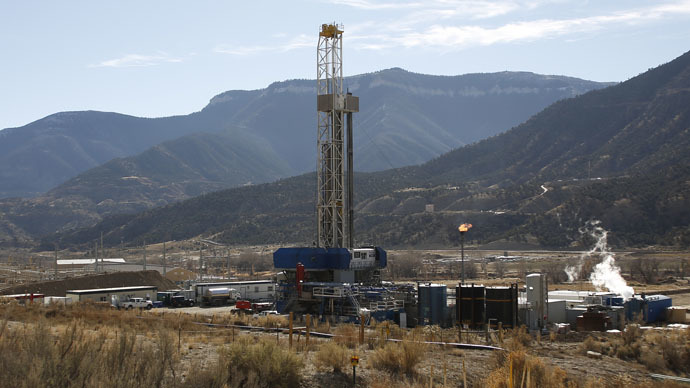EPA finds no ‘widespread, systemic’ danger to water from fracking

A draft EPA report leaked to the media indicates that the US government’s eco-watchdog believes fracking has had no “widespread or systemic impact” on drinking water, even as it acknowledged general lack of data and specific cases of contamination.
Hydraulic fracturing, commonly known as fracking, is a technology used to extract oil and gas from hard-to-reach rock and shale deposits. It can impact drinking water supply in a variety of ways, the Environmental Protection Agency acknowledged, from consuming water in drought-stricken areas to polluting water resources with fracking waste.
However, the agency said, it “did not find evidence that these mechanisms have led to widespread, systemic impacts on drinking water resources in the United States.”
The EPA did find specific instances where fracking had an impact on drinking water, including contamination of water wells. “The number of identified cases, however, was small compared to the number of hydraulically fractured wells,” the study said.
We asked the EPA if fracking is hurting water supplies. EPA's response: ¯\_(ツ)_/¯ https://t.co/uRffVbm2GI
— Christopher Mims (@mims) June 4, 2015
According to the agency, between 2011 and 2014 there were an estimated 25,000-30,000 new wells drilled and hydraulically fractured every year in the US. Fracking took place in at least 25 states between 1990 and 2013.
Between 2000 and 2013, approximately 9.4 million people and 6,800 sources of public drinking water were located within one mile of at least one fracking well. These water sources served more than 8.6 million people in 2013.
The draft report, available on the EPA site, is annotated with disclaimers that it does not constitute agency policy and is for “review purposes only.” In the 25-page executive summary, the agency specifically notes the report did not discuss the potential impact of fracking on agriculture or industry, other environmental aspects – such as earthquakes, air quality, or ecosystems – or the health and safety of workers and communities.
EPA report finds a small number of cases where fracking had impacts on drinking water wells http://t.co/hQQA7yQpHdpic.twitter.com/IcKSlArv4Y
— Simon Evans (@DrSimEvans) June 4, 2015
Time and again the EPA has identified major gaps in the scientific literature and data available that could provide insight into potential risks to water supply. Much of the information about the potential adverse effects of 453 chemicals used in fracking solutions is simply “not available.”
“Of the chemicals that had values available,” the study said, “noted health effects include the potential for carcinogenesis, immune system effects, changes in body weight, changes in blood chemistry, pulmonary toxicity, neurotoxicity, liver and kidney toxicity, and reproductive and developmental toxicity.”
READ MORE: Tainted by fracking? Drilling chemicals found in Pennsylvania drinking water
However, since different chemicals are used at different wells around the US, “potential exposure is likely to be a local or regional issue, rather than a national issue,” and was therefore deemed beyond the scope of the report.
Likewise, evaluating any potential risk to humans would require knowledge of the specific chemicals used at particular sites, data about human exposure, levels and durations. Again, none of that was deemed to be within the scope of the report.
The agency admits its assessment could be an underestimate, citing “insufficient pre- and post-hydraulic fracturing data on the quality of drinking water resources,” which “inhibits a determination of the frequency of impacts.”
Other limiting factors were said to be the presence of other contaminants, the “short duration of existing studies,” and “inaccessible information related to hydraulic fracturing activities.”
The EPA has been putting the study together since 2010, when Congress ordered a review of fracking operations in the US. The draft report will be finalized after a formal review by EPA’s Science Advisory Board, pending an 85-day comment period.












